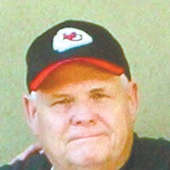Square peg, round hole -- doesn't fit
We have all heard this old saying. It's so easy to understand, that we wonder why anyone would ever question its validity. This is my second education related article. Like the old saying, I feel we are being asked to put students into a system where they often simply don't fit.
In the mid-1980s, Missouri initiated a new program for our schools called, "The Excellence In Education Act." This legislation had many varied aspects within the law. A major portion of this law created the Missouri Assessment Program, commonly known as MAP testing.
The idea behind this testing program was to create a set of standards of learning that each student in Missouri, should have learned by a certain time.
Here are my personal experiences with teaching and standardized testing, and why I think they don't achieve the desired outcomes.
I taught many subjects during my teaching days including: American history, world history, American government, sociology, geography, economics, and law. The majority of my tenure was teaching American history classes to 10th graders.
I usually had around 140 students per year, split into four different hourly class sessions. Each class used the same textbook and materials, but that is where many differences appeared.
In our high school we had certain classes that were offered only once per day. These included a variety of classes such as band, geometry, biology, agriculture, computer science, and several more.
There were also some classes that were offered for students that were having problems in certain areas. A couple of these were remedial English and math.
The result of these scheduling issues created something in my classrooms, that in education we call "leveling." What this meant, was that because students were in these very selective classes during other hours of the day, they could only be scheduled to attend American history at a certain time, because that was the only hour available.
The leveling came about because the kids in the upper level elective classes ended up in the same history hour, as did the students who were in remedial classes. No one planned this, it was just the way it happened, due to conflicting class schedules.
Year after year, I discovered that out of the four sections of American history, I had one class that had the very highest achieving 10th graders. There were generally two sections of average educational level students, and there was the final section, that was comprised of the students who had been in the remedial classes.
I had a responsibility to each and every one of these students, to provide them with the best American history education possible. The problem was simple. These kids ranged so widely in their academic abilities, that teaching them the exact same curriculum and tests, was not practical.
I, along with most of the other teachers adapted. We taught the same basics, but changed the student workload and evaluation, to reflect the abilities of each different classroom.
In my upper level class, I increased their workload tremendously. These were students who, in many cases, would be heading to college in a few years. I asked them to do many other extra assignments such as term papers, outside book reading, and special reports.
In my two mid-level classes, I offered a more traditional approach. We used the textbook for most of our studies. There were daily worksheets and homework assignments, and I tried to give each student the best overview of American history, that I could.
In my fourth section, I encountered issues that made the regular curriculum, which I had taught to the two middle sections impossible. One common issue was the reading ability of many in this section. A lot of these kids had learning issues that had plagued them all of their school days.
Surprisingly, I discovered that each year, this section of history was generally my favorite class of the day. It was as if they needed me more than the other classes.
These were kids who often had long standing issues with self confidence. From very early in their school years, they had fallen behind. Poor grades, and a sense of failure, often had created in them a distrust of teachers and school in general.
Instead of piling on lots of reading and worksheets, I spent more time practicing in-class participation study. We often worked on multiple social studies issues that would help them in their life after school.
My job was simple in my mind. I was not teaching these children to be ready for college or the tests that would be required to enter college. Instead, I wanted them to have everything I could give them, to be ready to succeed in life.
I will put this question to you readers. Tell me how some bureaucratic devised test, given each year to this type of broad range of students, proves anything?
In today's classrooms, many teachers are afraid to work with different levels of student achievement. If many lawmakers have their way, they will seek to have every student and teacher, learn the very same narrow curriculum.
How could any test for students like those in my lower level class, ever be fair? Students are as different as the stars in the sky. Like a square peg in a round hole, they often don't fit successfully.
I am not opposed to testing. What I am opposed to is this idea that a bunch of bureaucrats at the state level, will try to assess students and teachers, only on the basis of one yearly performance test.
Here is one final note on performance testing. Humans will not leave this to chance. When funding is at stake, you can bet there will be districts that will find ways, to insure that their students pass the tests. Wonder how they will do that?

